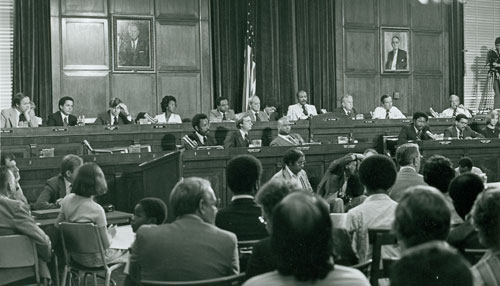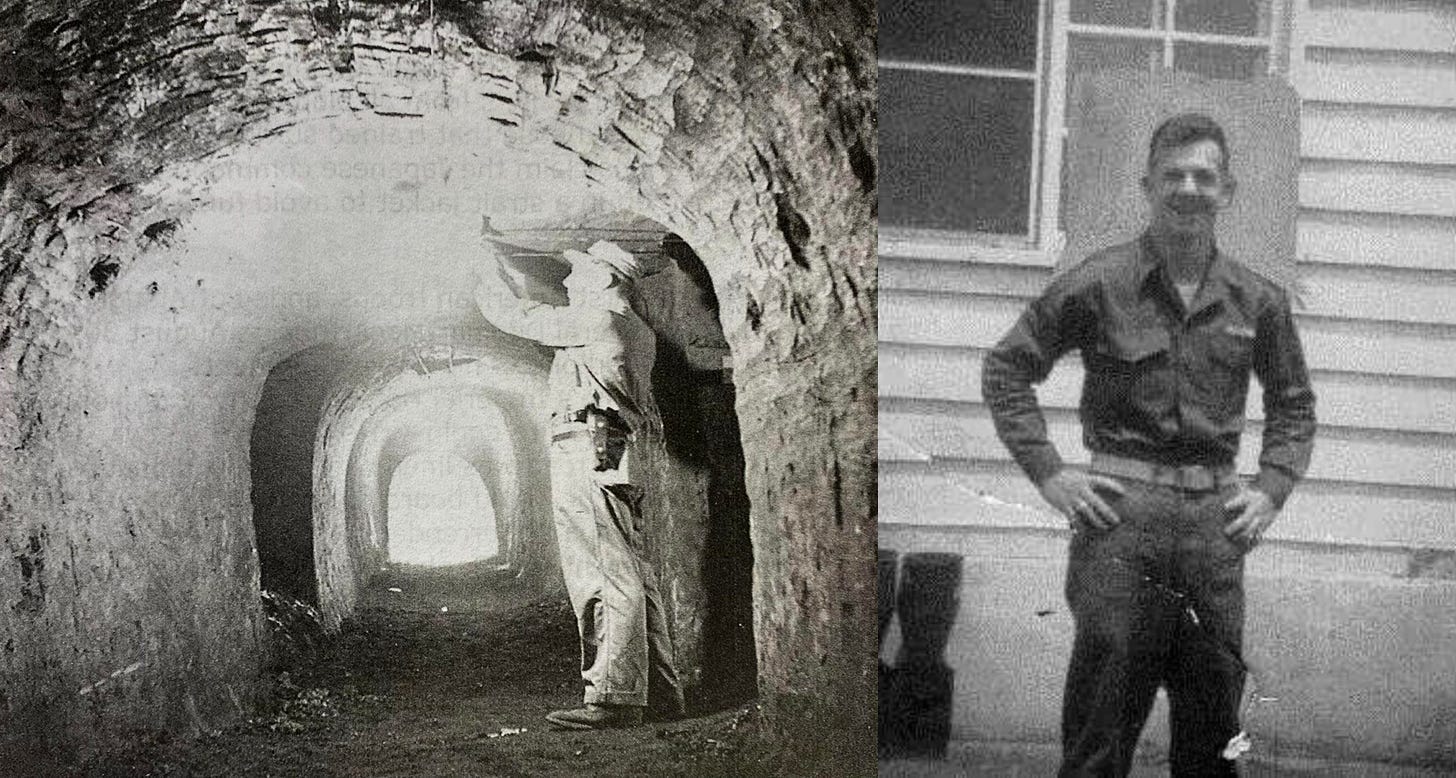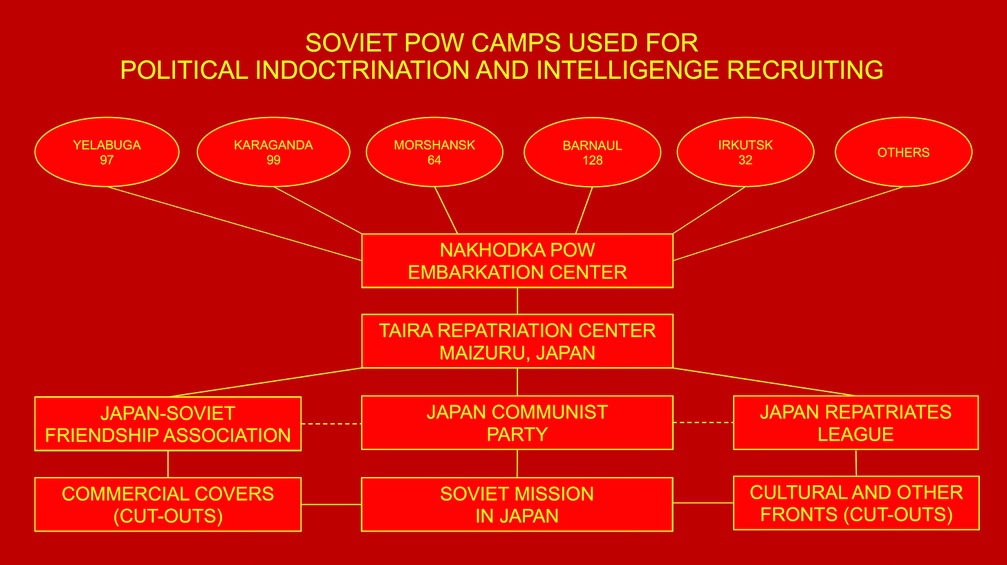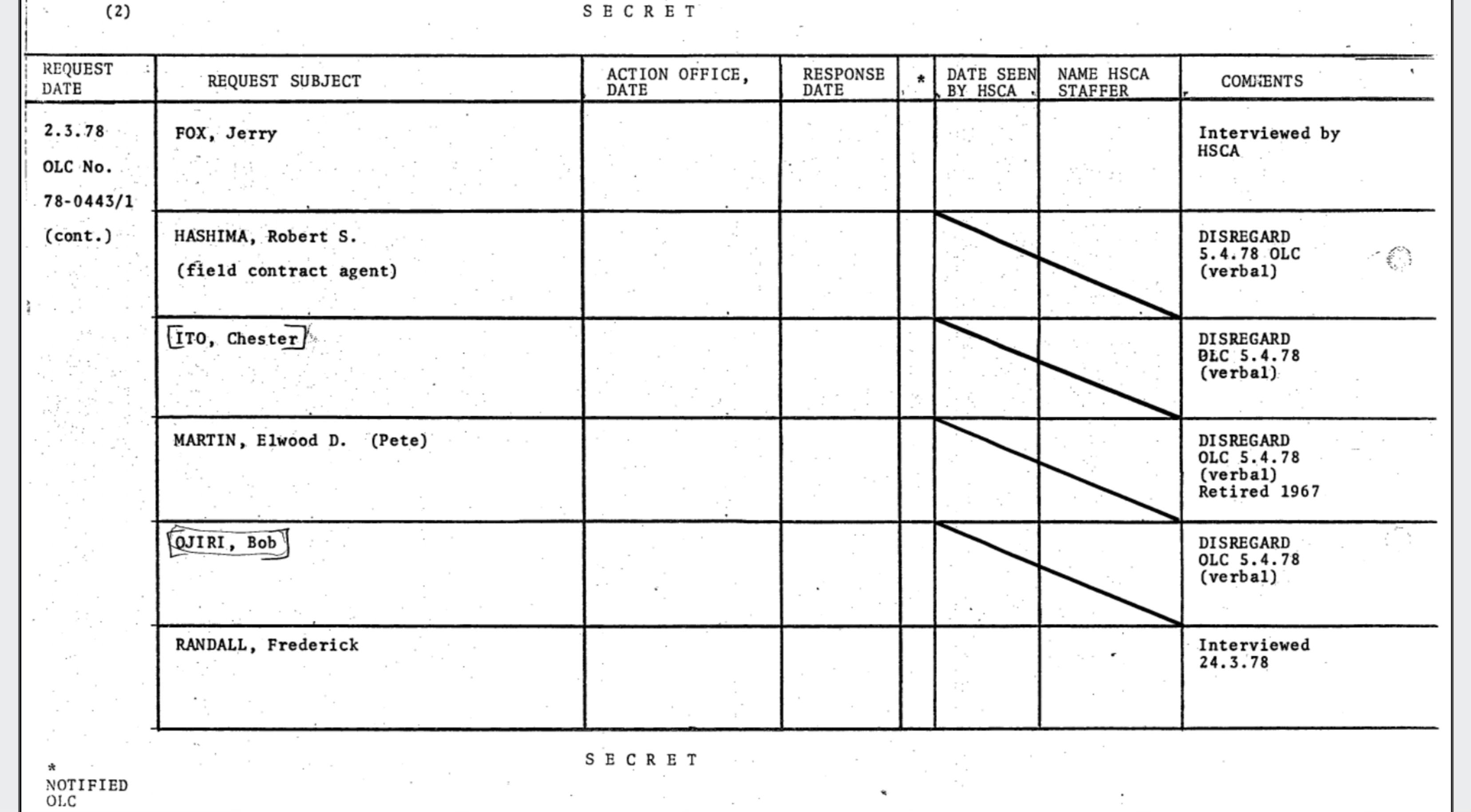
The House Select Committee on Assassinations (HSCA) reinvestigated the murders of President John F. Kennedy and Dr. Martin Luther King (Credit: U.S. Congress)
The excellent Solving JFK podcast, hosted by Matt Crumpton, reminds us of a thought-provoking anomaly. The 1964 final report of the President’s Commission on the Assassination of President Kennedy (the “Warren Commission”) says that during his service as a Marine in the Far East, Lee Harvey Oswald, accused assassin of President John F. Kennedy, was in Taiwan from Sept. 30, 1958, but returned to Atsugi, Japan, by Oct. 5. The Warren Report does not say what Oswald was doing in Taiwan, but the House Select Committee on Assassinations (HSCA), which reinvestigated the JFK and Martin Luther King murders in 1976-79, concluded that Oswald never visited Taiwan at all.
The Solving JFK episode can be heard here.
This astonishing discrepancy in the official record is another arrow in the quiver of those entertaining the irrepressible theory of the “Two Oswalds.” That thesis essentially holds that there were two men who not only bore an uncanny resemblance to each other but also went by the same identity as a matter of official record in furtherance of an intelligence operation that desperately needed to be suppressed after the assassination.
The incongruity also, incidentally, strengthens the widespread and more general conviction that agencies controlling information on Oswald, whether the CIA, FBI, military intelligence services or others, repeatedly deceived official investigators. Although the HSCA at least concluded that JFK was “probably” murdered “as a result of a conspiracy,” its inquiry proved to be a “damp squib” overall. It is no longer controversial to assert that the CIA deliberately diverted and stonewalled the HSCA. One area in which CIA deception appears especially vigorous is Oswald’s time in Japan, a chapter that remains an information “black hole,” to paraphrase John Newman, author of JFK and Vietnam (2017) and Oswald and the CIA (2008). The Taiwan episode is just one example.
This “black hole” has exacerbated suspicions of Oswald’s ties to U.S. intelligence in Japan, as alleged by a former CIA employee based in the Tokyo Station at the time of the assassination. Such connections have never been proven, but in light of the CIA’s obvious deception of the HSCA about Oswald in other areas, especially New Orleans and Mexico City, Agency trickery on Oswald in Japan is also worth studying. JFK researchers of integrity are convinced that the CIA is still concealing the extent of its ties to Oswald, and these links may very well go back to his time in Japan — or even earlier.
The House of Representatives Inquiry
On June 12, 1978, a document handwritten by HSCA investigator Harold Leap was forwarded within the CIA. Fully declassified on Aug. 24, 2023, it summarizes Leap’s interviews of 12 employees of the CIA’s Tokyo Station pursuant to “critic publications and specific allegations by former CIA employee James Wilcott that LHO was a CIA agent.” Wilcott had stated in a closed-door HSCA session that “a CIA case officer stationed in Tokyo, Japan, told him that LHO was a CIA agent and also mentioned LHO’s cryptonym.”
The 71-page document that includes Wilcott’s HSCA testimony and related material refers to an unspecified “Oswald project” requiring disbursements of funds, and to Atsugi as “a plush super-secret cover base for Tokyo Station [i.e., CIA] special operations.” Wilcott, a CIA finance officer, testified that the conversation occurred “in the Tokyo Station shortly after the word of the JFK assassination was received on 23 Nov 1963.” Although Wilcott “could not recall the name of the case officer or the cryptonym,” he said that “considerable conversation took place among CIA employees at the time concerning the Oswald-CIA agent issue.” All 12 interviewees were asked whether they had come across any indication that Oswald was an intelligence agent. All said no.
The interview notes appear in summarized form for all officers but one, William Crawford, the CIA’s deputy chief of station in Tokyo from March 1959 to October 1960. In fact, all interview subjects are identified as having worked in the station in the period from 1959 through 1964, presumably to account for any CIA employees who were working in the Tokyo Station when Wilcott was, and whom Wilcott might thus have overhead. Yet Oswald was based in Japan from September 1957 to November 1958, and it is striking that no one but Crawford is identified as having served there during that period too.
Crawford is listed in another CIA document as “acting executive officer” of “Detachment C” when Oswald was serving at the Atsugi Naval Air Station. Detachment C was the CIA unit deployed to Atsugi to operate the U-2 spy plane program, which conducted surveillance missions over Communist China and the Soviet Union. But Crawford was not among the 18 CIA personnel that Wilcott recommended for interview by the HSCA. Even Detachment C’s actual executive officer for the relevant period, Werner Weiss, was not interviewed, despite the fact that he was alive and well in 1978.

In all, Leap only interviewed four out of Wilcott’s 18 recommendations. Wilcott obviously provided the names of these 18 people because he knew they were working in the Tokyo Station when he (Wilcott) was, but, again, of the four employees that the CIA made available to the HSCA for interviews, nothing indicates that any of them were even in Japan when Oswald was. No explanation is given for this, even though, of the 14 people on Wilcott’s list who were never interviewed by Leap, most were actually serving in Japan during the time Oswald was at Atsugi. Why were they left out of the interviews?
Leap’s notes from his interview of Crawford say that the subject “didn’t know [Lee Harvey Oswald] and never heard the name until after the assassination.” The only reason Oswald was connected to the U-2 program (and thus the CIA) at all, Crawford said, was that “the CIA at Atsugi did not have their own radio-radar facilities,” so the U-2 planes “utilized the naval base communications only for take-off and landing clearance.”
Crawford did note that the “CIA recruited personnel for the program from the military service,” however, and “[a]ll program employees were paid by CIA.” He also outlined the system for U-2 personnel resigning from and returning to regular military service. [Note: As Oswald’s tax returns are still withheld in full from the public, we can’t know whether an intelligence agency paid JFK’s accused assassin during his time at Atsugi.]

Aerial view of Atsugi Naval Air Station as it appeared in 1988 (Credit: Ministry of Land, Infrastructure, Transport and Tourism of Japan/Public Domain)
CIA Sleight of Hand
The CIA apparently composed an undated document entitled, simply, “LIST OF AGENCY EMPLOYEES,” in preparation for the HSCA’s 1978 investigation. A table featuring several operatives includes operations officers, and four names — Jerome Fox, William V. Broe, Frederick C. Randall, Robert P. Wheeler — are recognizable from the Leap write-up.
However, others — notably Japanese-American CIA officers — are included in the still-redacted file and were in the Tokyo Station in the years 1957 and 1958. The most recent declassified version (June 27, 2023) retains redactions in the “Security Posture” column for Chester H. Ito, a CIA operations officer in the Tokyo Station for more than 20 years. Since Ito died in 1999, the Agency is concealing the profile of an employee who died a quarter-century ago but likely worked at Atsugi when Oswald was based there.
A conspicuous redaction in the CIA’s “LIST OF AGENCY EMPLOYEES” is the name of Number 6, whose security posture suggests a possible Soviet connection:
Former Department of Army employee in Japan picked up as contract employee. Poly revealed unresolved issues regarding Communist contacts and/or associations.

Although the name is redacted, it is in the same position in the table as “Robert S. Hashima” in Wilcott’s list of 18 recommendations, and Hashima appears in other documents composed in preparation for the HSCA’s investigation. In his “executive session” testimony to the HSCA, Wilcott describes Hashima as a “deep commercial cover agent,” and elsewhere as a representative of “Fuji Shoji Co. Ltd.” Under or alongside Hashima’s name in CIA documents, regarding whether he should be made available to HSCA investigators, there is simply an unexplained (yet familiar) notation: “Disregard.”
Yet the most remarkable aspect of the case is this: the HSCA understood the importance of investigating the years 1957-1958 in connection with Oswald. HSCA Chief Counsel G. Robert Blakey, in a letter dated April 26, 1978, requested that the CIA make available for interview the “chief officers and deputy chief officers of the CIA base at Atsugi, Japan from 1956 to 1960.” These years encompassed Oswald’s time in Japan.

This line of inquiry mysteriously fizzled. On the next day’s routing and records sheet, a handwritten note by Norbert Shepanek of the CIA’s Directorate of Operations says:
I do not know if there were any DDO officers at Atsugi 56-60. [Deputy Directorate of Science & Technology] is answering separately. Negative reply requested. Shep
Following this, in a handwritten note on an official routing slip dated (apparently) May 2, 1978, S&T officer Carroll Hauver (later CIA Inspector General) disseminates the falsehood that Atsugi was just a “support base staffed by support personnel” during 1956-60. That seems to have shut the inquiry down, yet as anyone who has looked into this subject in any depth knows very well, Atsugi was far more than just a “support base.”
The Biggest CIA Base in the Far East
While Oswald was based at Atsugi, the CIA’s “Joint Technical Advisory Group” (JTAG), whose activities remain obscure to this day, was located at the naval air station. Oswald was a radar operator and performed sentry duty at the U-2 hangar, but he also lived and worked in close proximity to JTAG, which encompassed more than the U-2 facility. As early as 1964, the CIA’s deputy director of plans, Richard Helms, had described the CIA’s Atsugi facilities — in particular JTAG — to the Warren Commission more extensively as
consisting of 20 to 25 individual residences, two dormitories, an office area, a power plant, several Butler-type warehouses, and a club building used for recreation and a bachelor officers’ mess.
The Warren Report avoided mention of either JTAG or Detachment C, never interviewing anyone about either. Helms, the No. 3 man at CIA, admitted 60 years ago that a specific CIA program (the U-2) operated from Atsugi while Oswald was there, but that was all.
Still, even this was more than the CIA told the HSCA.
In his book, The Missing Chapter: Lee Harvey Oswald in the Far East, Jack Swike — a former Marine Corps security officer at Atsugi — explains that JTAG was set up in 1950, employed “[a]bout 1,000 people” and occupied “50 acres of the Atsugi base.” Originally devoted to training clandestine agents infiltrating enemy areas during the Korean War, it served — according to Swike’s Marine Corps intelligence source — as a base where “weapons were flown in from hostile areas and were tested.”
Researcher Dick Russell, in The Man Who Knew Too Much, refers to JTAG as “the CIA’s main operational base in the Far East” and quotes L. Fletcher Prouty, former chief of special operations for the Joint Chiefs of Staff in the Kennedy administration:
“I went into Atsugi just as World War II ended, taking some of MacArthur’s bodyguard in there. A monstrous stairway went down into caverns, you could drive a truck into it. A huge underground base. The agency used it for a lot of things.”

Left: Tunnel under the Atsugi base (1950s), reproduced by Jack Swike in The Missing Chapter: Lee Harvey Oswald in the Far East (Credit: USMC); Right: Photo of Oswald (doctored around head and shoulders), possibly in Atsugi, 1958 (Credit: Unknown)
In 1983, Jack Swike sued the CIA for information about JTAG but lost the case.
“I believe that the U.S. Department of Defense did not want any investigations conducted into military matters in Atsugi in the late 1950s because the Marine Corps Nuclear Weapons Assembly team was located in MAG-11. Thus, the U-2 Spy Plane was not the top-secret program on the base.” ~ Maj. Jack R. Swike, USMC
In other words, according to Swike, in 1957-58 Oswald’s unit (MAG-11) had a more sensitive purpose than the U-2, a program the Soviets already knew about anyway. Moreover, the CIA itself consistently downplayed the significance of the U-2 in Japan. An internal report titled “EIDER CHESS” (codename for the U-2 program), “Subject: DDS&T Interim Reply to HSCA Request, 8 May 78,” gives “General Background” on Detachment C, noting that Atsugi was not the usual departure point for U-2 missions over Russia:
The first overflight of the USSR from Atsugi occurred on 1 March 1958 and this flight was the only and last flight. This flight, as other previous flights by other Detachments, was tracked by Russian radar…
This seems to have ended the U-2 matter for the HSCA, though it shouldn’t have. Even if the U-2 made only one surveillance flight over the USSR directly from Atsugi, Oswald was serving there at that time. If Oswald’s defection to the USSR was part of a U.S. espionage operation to deceive the Soviet enemy, this detail would have served the scheme.
As early as Apr. 13, 1978, a routing and record sheet from the CIA’s Office of Legislative Counsel (OLC), released in full on Dec. 15, 2022, reflects that the HSCA had inquired about at least one CIA resident of the Tokyo station during Oswald’s time in Japan. The request from the OLC’s Rodger Gabrielson to the Directorate of Operations (DO) reads:
Harold Leap, HSCA staff, wants the name of COS [Chief of Station] Tokyo Station for the years 1957 and 1958 to close the loop on his inquiry as to whether Tokyo Station had any relationship with Oswald when he was in Japan.
Shepanek of the DO gives a handwritten answer: “The COS Tokyo for the years 1957-58 was: Mr. John Baker. Mr. Baker died in 1964.”
Leap’s handwritten document also contains anonymous entries in different handwriting. At the end of Leap’s notes from the Crawford interview, someone has written:
“Harold: Can you add the following statement?”
Crawford said that had LHO been associated with the Atsugi CIA Station, he, as exec officer, would’ve known about it.” (A crossed-out note after this is still legible: “However he would not been aware of his exsistence.”)
Doubts as to how forthright the CIA was about Oswald’s exposure to U.S. intelligence operations in Japan are compounded by these facts:
- None of Leap’s interviewees began working at the CIA’s Tokyo Station until after Oswald had returned to the U.S., even according to the CIA’s own records; and
- None of them discuss or are asked about the substantial JTAG complex.
The episode looks like another instance of CIA diversion of investigators, similar to the CIA’s assignment of former clandestine operations officer George Joannides as its liaison to the HSCA, in violation of the Agency’s agreement with Congress.
Soviet Connections

U.S. Army Counterintelligence Corps chart for Soviet recruitment of Japanese prisoners of war as agents in the early 1950s (Credit: 441st CIC Detachment). The 441st CIC Detachment was the unit of Richard Case Nagell, discussed below.
Some of Leap’s interviewees said they thought Soviet intelligence might have recruited Oswald because “the CIA station in Tokyo had identified a KGB program specifically designed to recruit U.S. military personnel in Tokyo.” Japan was a venue for active recruitment of U.S. servicemen by Soviet intelligence, and Soviet engagement of American base personnel likely had in mind operations far more sensitive than the U-2 when Oswald was at Atsugi. The still-mysterious JTAG closed in December 1960 (more than six months after the U-2 program folded in Japan), but a highly secret, heavily guarded nuclear weapons assembly center known as “METO” was also on the base.
Swike writes that, “Lee Harvey Oswald saw some activities in the METO area,” and when Oswald told U.S. consul Richard Snyder in Moscow on Oct. 31, 1959, that he knew “something of special interest,” he was “probably referring to the METO Site.”
[T]he belief was that he had information about the U-2 Spy Plane, which was not the most important item in Atsugi at the time. The Russians were well aware of the U-2s in Atsugi, and were seeking other information. Oswald probably gave them some clues about U.S. nuclear intelligence.
Knowing that Soviet intelligence in Japan was interested in cultivating agents among U.S. military and intelligence personnel, the CIA would, it is reasonable to conclude, have employed double agents to trick its Soviet counterpart there. In the CIA’s LIST OF AGENCY EMPLOYEES document, the notation in the “Security Posture” column for the CIA employee with the redacted name (presumably Robert S. Hashima) of “unresolved issues regarding Communist contacts and/or associations” is reminiscent of the story of a better known, self-described U.S.-Soviet double agent in Japan, Richard Case Nagell.
As is now well known, ex-U.S. Army Counterintelligence Corps (CIC) officer Richard Nagell was arrested in El Paso, Texas, on Sept. 20, 1963, and later claimed to have orchestrated his own arrest to ensure he was in U.S. custody when JFK was assassinated. In fact, while it is not known whether Nagell ever submitted to a polygraph, and the years for the redacted employee (1953-1954) do not coincide with Nagell’s time in Japan, the rest of the description coincides almost exactly with Nagell’s account of himself.
In the above-mentioned The Man Who Knew Too Much by Dick Russell, whose research forms the backbone of the recent Who Killed JFK? podcast series, Nagell described himself as a former Department of the Army employee when explaining the nature of the Foreign Operations Intelligence (FOI) agency for which he worked:
“On paper, FOI was subordinate and operationally responsible to the Office of the Assistant Chief of Staff for Intelligence, Department of the Army. In function, however, FOI was merely an augmentation to CIA special (military) operations, in effect a covert extension of CIA policy and activity designed to conceal the true nature of CIA objectives.” (p. 50)
This would have qualified Nagell, like Hashima, as a “contract employee” of the CIA, and the “unresolved issues regarding Communist contacts and/or associations” square with Nagell’s description of himself as a U.S.-Soviet double agent working for the CIA. “Robert S. Hashima,” or whoever is redacted in the CIA document, was very likely one of the double agents the CIA used to interact with and infiltrate Soviet intelligence in Japan in the 1950s and 1960s. He may very well have interacted with Oswald in that capacity as well, and may thus have talked about Oswald in front of Wilcott in the Tokyo Station.
Nagell was never called before the HSCA in spite of his claim to have alerted the FBI from jail about Oswald and an assassination plot against JFK. Nagell claimed to have known Oswald in Japan and to have attempted to persuade the Soviet military attaché in Tokyo to defect in place. Nagell said he had met Oswald in New Orleans and Mexico City, and that he had warned the ex-defector about associating with Cuban exiles.
Suspicion of Oswald’s double-agent status endures. His “double agent” activity in New Orleans consisted of first posing as a sympathizer with anti-Castro Cubans of the CIA-funded Student Revolutionary Directorate (DRE), offering to train them for attacks against their Communist homeland, then posing as a Castro sympathizer and Fair Play for Cuba Committee (FPCC) supporter, getting in the faces of the DRE members on camera as he passed out FPCC leaflets to passers-by on the street.
Nagell, when he was arrested, had a mimeographed FPCC newsletter addressed to him in his possession and FPCC contact data in his notebook. He refused to explain to Russell the extent of his own FPCC ties, but parallels with Oswald are unmistakable. One of three versions Nagell gave for orchestrating his own arrest in El Paso was to avoid becoming a patsy for the JFK assassination. In 1995, Nagell was found dead in his home at age 65, a day after the Assassination Records Review Board (ARRB) had summoned him to testify.

Left: Richard Case Nagell, Bronze Star and 3-time Purple Heart recipient (Credit: U.S. Army); Center: Nagell under arrest in El Paso (Credit: El Paso Herald-Post); Right: Oswald under arrest in Dallas (Credit: The Sixth Floor Museum at Dealey Plaza)
Special Treatment for a Lowly Private
According to the Harold Leap interview document,
All the subjects worked within the SR [Soviet Russia] Branch of the Tokyo Station and theoretically one of them would have handled or had knowledge of the recruitment. All thought if Oswald [had] been recruited without their knowledge it would have been a rare exception to the working policy and guidelines of the station.
Unfortunately, all of these “subjects” appear irrelevant as far as Oswald’s time in Japan is concerned. The CIA was no doubt very happy to keep it that way. But one thing is unquestionably correct about the above statement. From the circumstances of his defection to the USSR, to the inexplicably late opening of his 201 file under an erroneous name in the CIA’s Office of Security, to the lack of any proper debriefing of him after his arrival back in the US in June 1962 (unlike contemporary US defector Robert Webster, debriefed for over two weeks on his return), and the CIA’s close surveillance of him right up until the assassination itself, Lee Harvey Oswald remains a “rare exception” indeed.
Omission from the HSCA’s investigation of CIA personnel active in Japan during Oswald’s time there — as the CIA’s own files show — is inexplicable for a serious investigation. The witnesses that the CIA made available to the HSCA were mostly irrelevant to James Wilcott’s allegations, yet the HSCA mysteriously never followed up. The author of the LIST OF AGENCY EMPLOYEES document is unknown, but the style resembles that used by George Joannides, the CIA officer assigned to stonewall HSCA investigators, as evidenced by another tabular document known to have been his work.

Excerpt from a 248-page document prepared by George Joannides in preparation for the HSCA investigation, dated July 24, 1978
Whether the HSCA was complicit in its own hoodwinking, the CIA successfully protected its information “black hole” around Oswald in Japan before congressional truth-seekers in 1978. Today, with its “Transparency Plan” for JFK files approved by President Biden in December 2022, the CIA is making sure the void in the historical record is never filled.
[This article first appeared on January 25that the substack site: The Larger Evils.]


